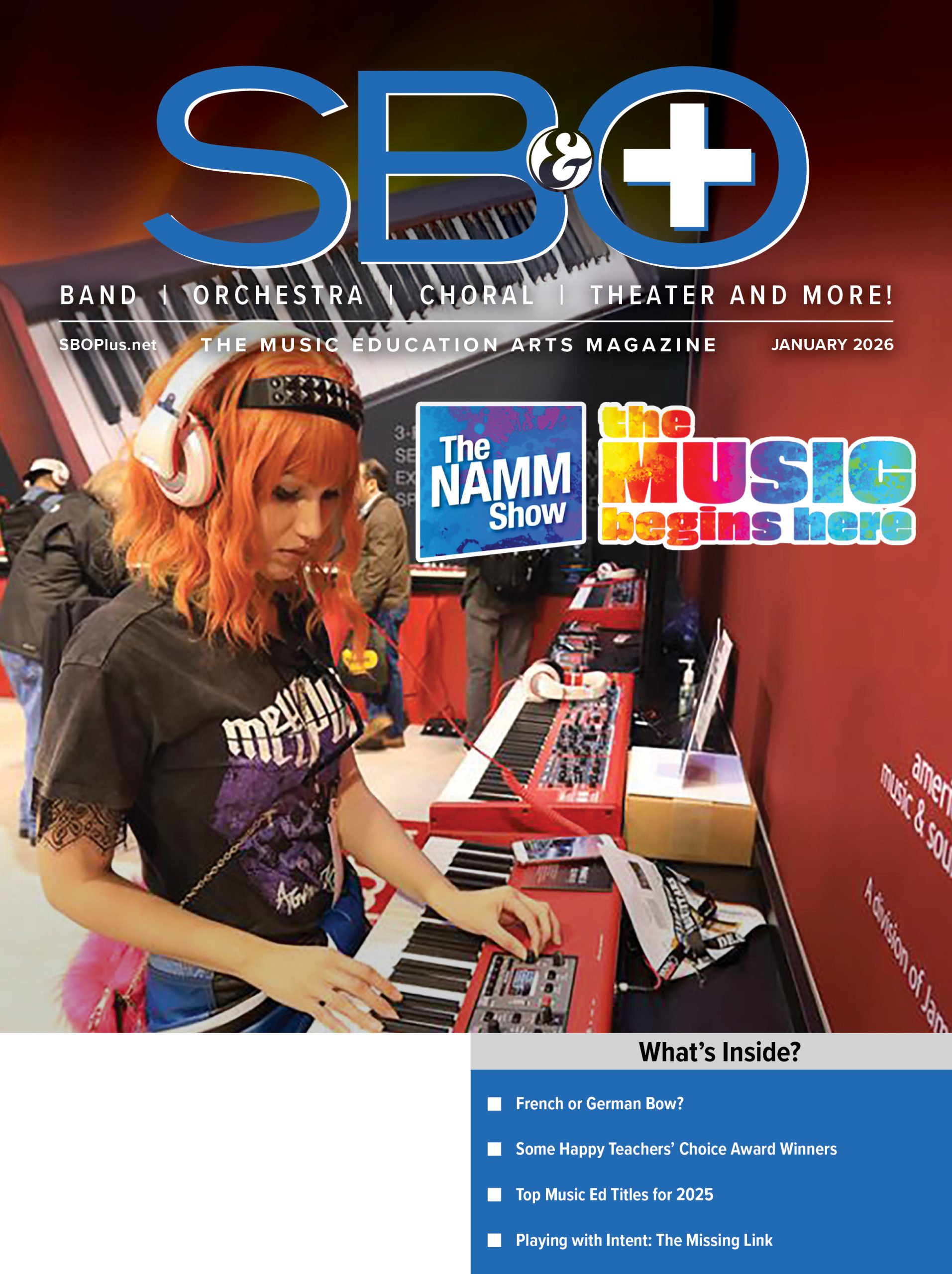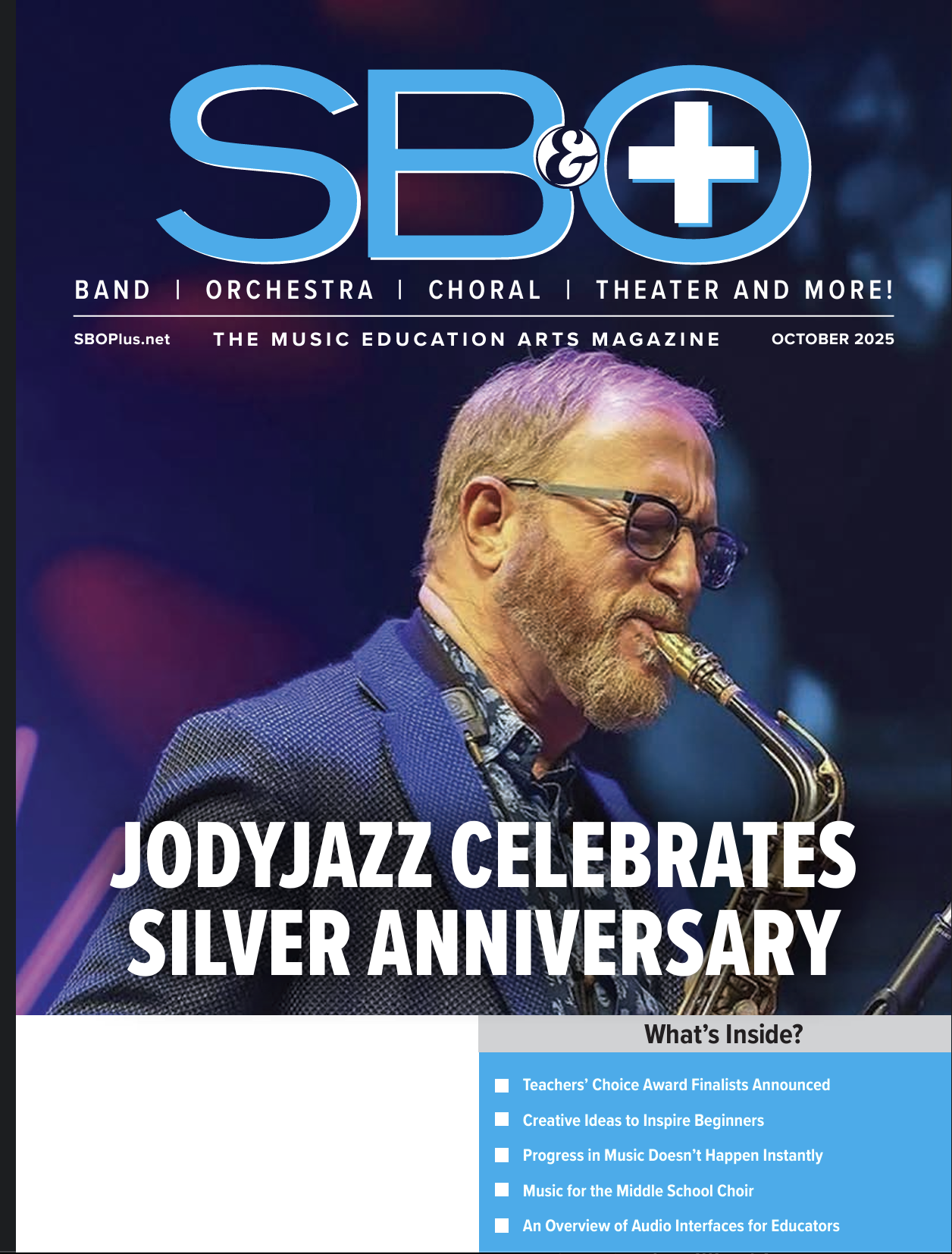 Development of the “rhythm base” of any ensemble requires much effort and many approaches but it will produce the maximum musical effect.
Development of the “rhythm base” of any ensemble requires much effort and many approaches but it will produce the maximum musical effect.
All music has a groove, that when established, allows that style to feel correct and alive. If the rhythmic base is not grooving it will not be possible for the melodic and harmonic content to be effective. Since music is made up of multiple rhythms occurring at the same time we must have some ensemble rhythm rehearsal strategies that are proven to work.
Rehearse the rhythms by themselves
The goal is to get the whole ensemble to think as percussionists – in other words “everything must line up vertically.” Once we add in the notes (melody, harmony etc.) we can start to “shape” the rhythm within the phrase but at the beginning we must be able to think/hear vertically. You may want to reference Parts #1,2,3 of this series in order to review some ways to think vertically. I have found that using different sounds/surfaces for each rhythm group within the ensemble allows the performer to hear where his/her part occurs. Possible colors include music stands, handclaps, vocals, chairs, percussion instruments etc. I also like to change the metronome color because after awhile our ear grows accustomed to that repetitive sound and we tend to not pay attention to it. The metronome rhythm can also change. Try using a common rhythm from the piece of music as well as the subdivisions of the beat. Without the distraction of note accuracy, tone, fingerings technique etc., the performers will be able to concentrate on the rhythms and how they fit together.
Add in accents
Accents are like mini explosions within a rhythmic line. Adding accents to a rhythm will give it direction and will establish reference points for the performers. Be minimalistic. Don’t add too many accents at once or it will be difficult to control. Add in cross accents (those that don’t line up) so that one musical line will start to communicate with the other. Change the accents around once the first set is learned. Having the students sing their accent loudly while playing the rhythm and/or stand when their accent arrives creates a fun atmosphere where everyone has to commit to the accented note. Accents give feel and life to music so why not use this to our advantage.
Layer the rhythms
• Identify one small section that you want to make feel better
• Perform one key rhythm over and over
• Allow the other ensemble members to move to the music and be part of that groove
• Add a contrasting rhythm from that same section
• Allow these two to “settle”
• Keep adding other rhythms one at a time until you have the “bed” of rhythms completed
• Note that we are not playing through the whole section. We are just performing the key rhythms at one time.
This whole process may take five minutes and usually when finished, the entire ensemble is smiling because it feels so good. Now play through the section as written and try to make it feel that way. Don’t be afraid to go back and forth between only rhythms and as written.
Rank layers by importance and purpose
Unfortunately not every line within a piece of music is the most important part. By simply identifying and ranking the parts, you can establish how the audience should hear the music. A sample phrase could look like:
a. Melody – clarinets
b. Counter-melody – trombones
c. Downbeats – trumpets and tubas
d. Flourishes – mallets
e. Harmonic rhythm – flutes, oboe, bassoon, horns, percussion
This system allows each phrase to have its own distinct color combination and therefore give the music variety.
However, every part has to have integrity. A good friend of mine says that he plays every part as if it were a solo just in balance within the ensemble. Another enlightening way to hear all of the rhythms during rehearsal is to rearrange the layers i.e. counter- line is now the most important aspect etc.
Take it out of the original style and add phrasing
Let’s take for example that you are playing a ballad (yes, a ballad has a groove!). Have your percussionists set up a completely different style such as a bossa nova complete with drum set, maracas, claves, cowbell etc. Now have your students play a phrase from the music and let then adapt to that style. Let it become a little free, let them have fun, maybe even try some solos over the top as in jazz band. You can also add in phrasing such as crescendo through the whole phrase, decrescendo through the whole phrase, one measure up and one measure down, add accents etc. Another variation is to use the metronome bleeps as upbeats not downbeats (this is described in Part #2 from this series). When you place the ballad back into context the students will be much more confident with their individuals parts.
Identify who you are with and/or against
It is very important that the performer identifies who else within the ensemble has their rhythm and/or a similar rhythm. With this knowledge they know who to listen to for timing, phrasing and feel. Then, it is also good to know who they are playing against so that their rhythms fit within the other part thus establishing groove and communication.
Rhythmic accuracy will propel any performance to new heights. It is up to all involved in the ensemble to explore the many ways that can help rhythms communicate with each other, thus making the music feel alive and fresh to the performers and audience. Don’t be afraid to experiment with your own ideas in order to make the music you play special.
 Kevin Lepper is the retired Director of Applied Studies and Professor of Percussion at VanderCook College of Music in Chicago, Illinois. He has numerous published percussion works and has written/taught for a drum corps, symphonic, marching band and TV/ radio commercials.
Kevin Lepper is the retired Director of Applied Studies and Professor of Percussion at VanderCook College of Music in Chicago, Illinois. He has numerous published percussion works and has written/taught for a drum corps, symphonic, marching band and TV/ radio commercials.



























